#ice caps
Text

Mountain scenery
#mountains#country#cold#ice caps#snow#views#nature photography#photography#travel#worldtalks#uploads#travel blog#nature
234 notes
·
View notes
Photo
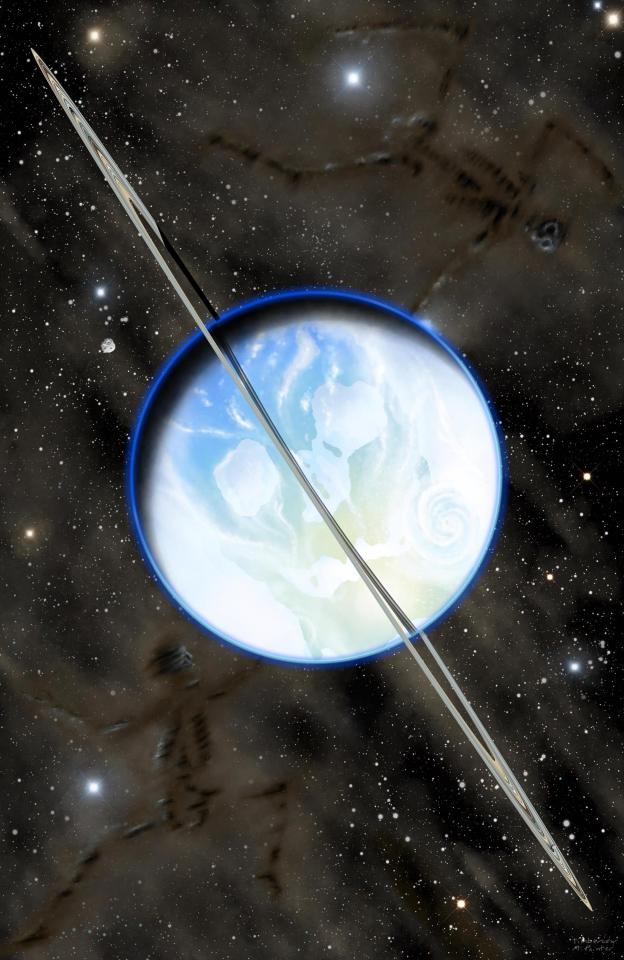
The icy cold of space.
#art#digital art#skull#skeletons#planet#moons#ringed planet#ice caps#clouds#alien planet#stars#nebula#reflection nebula#space#scifi#spooky#ocean#blue#brown#scifi art#space art#rings#artists on tumblr
54 notes
·
View notes
Text
Global Warming + Polar Ice Caps Meltdown + Plastic Pollution Of The Oceans + Death Of Sea-Life - Ecologic Campaign With Photo Art Self Portraits By Anya Anti From Ukraine









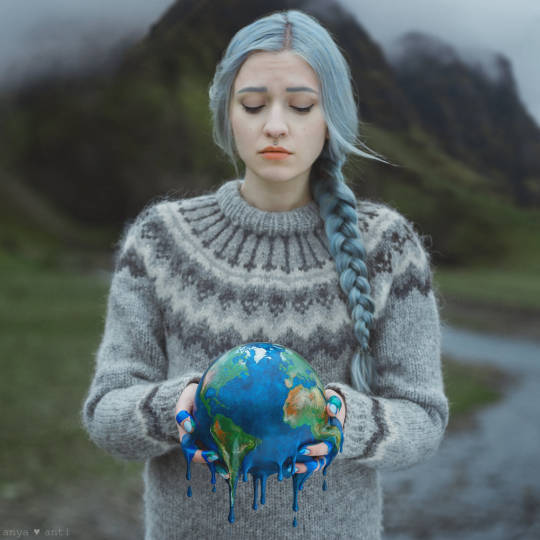

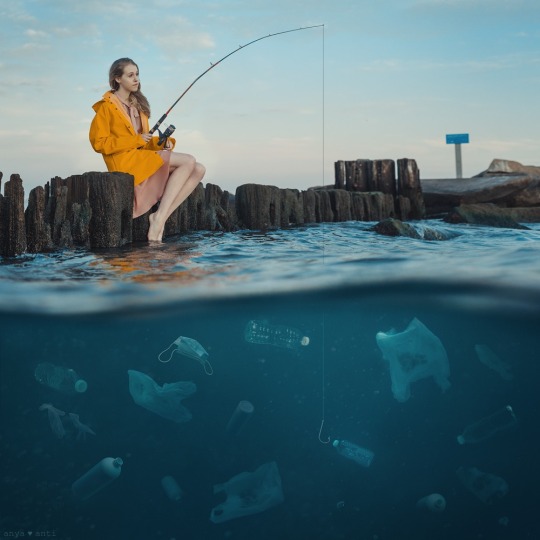

Afterwards, I'm going to post these photos separately, so that you may re-blog them. This is very important content which needs to be shared to spread the word. We all must act immediately to save this planet. We don't have the right to keep destroying something as perfect as the Earth. We need to think that this is the legacy we're going to pass to our children and they don't deserve to live in a chaotic planet where the law will be to kill or be killed. Bless everyone who may re-blog this.
#fine art photography#anya anti#ukrainian photographer#ecological campaign#photographers on tumblr#women photographers#female photographers#photography#portraiture#photography blog#photoblog#photo-art-lady#photography artwork#global warming#climate change#climate action#climate catastrophe#ice caps#polar ice caps meltdown#plastic waste#pollution#air pollution#water pollution#ocean pollution#death of sea life#save the earth#save the planet#sustainability#environmentalism#environment
8 notes
·
View notes
Text
The Arctic ice sheets are melting. Many already understand that is will lead to sea-level rise, but there is another effect that this may have on the world. In the past the melting of large masses of ice in the Artic Ocean has happened before and they had massive effects on the climate. Europe cooled dramatically, especially in winter, and Asia showed signs of desertification. Climatologists believe that these temporary climatic shifts may happen again now that the Arctic ice sheets are melting due to human driven climate change.
You may wonder how melting ice sheets may make parts of the world cooler. Some might know of the albedo effect. The white of the ice reflects the energy of the sun back into space. As the ice melts there is less white to reflect the energy and more heat remains on Earth. If the heat is increasing, then how can parts of the world become cooler? This is because the chain reaction that leads to potential cooling isn’t linked to the amount of ice left, but the amount melted. When ice melts, fresh water is added to the ocean and this influences how the ocean functions.
Oceanic circulation is often called a conveyor belt by oceanographers. Ocean waters rise in the Northern Pacific Ocean and the Indian Ocean. Then they travel across the surface to eventually sink again in the North Atlantic Ocean. From there they travel across the bottom of the ocean back to the Pacific and the Indian Oceans. Figure 1 shows this circulation. It takes centuries for waters to travel along the entire conveyor belt, but if the circulation gets disturbed the effects may be noticeable quite a bit faster. This may be a good hundred years, but that is quite fast on a geological time scale.

Figure 1: This map shows a simplified image of the Great Ocean Conveyor Belt. Arrows indicate the direction in which the water travels. Blue indicates deep water currents and red indicates surface water currents (Source: IPCC 1996, based on Broecker (1987)).
So what happens if a lot of fresh water from icebergs gets added in the area where the waters sink? To answer this question we need to know the mechanisms behind the sinking of these waters or, as it is also called, the North Atlantic Deep Water formation. The warmer waters that arrive from the south are saltier without being heavy. This is due to the different properties water can have at different temperatures. As the waters travel north they become colder. The higher salt content causes the waters to become heavier and eventually sink. Much like water evaporates more when the air is warm and then falls down as rain when the air cools. When fresh water is added to these waters their salt concentration decreases and therefore the speed at which they sink decreases as well.
Scientists have measured a slowing down of North Atlantic Deep Water formation in certain places in recent years. They have also observed mass melting of icebergs in the distant past. These are called Heinrich events and can be observed in oceanic sediment by the large rocks that fell as the icebergs melted. Both computer models and natural records from prehistoric times show a chain of events caused by this melting and subsequent slowing and/or stopping of the North Atlantic Deep Water formation. Figure 2 shows a simplified map of climate anomalies from an event that happened 8,200 years ago. Lands near the North Atlantic cooled down, especially during winter, Africa and Asia saw decreases in rain, and the Americas suffered from increased winds.

Figure 2: Summary map of climate anomalies during the 8k event (from Alley & Argustsdottir (2005)).
But how can one part of this circulation cause effects as far away as India? Lets go back to the name ‘conveyor belt’. If you stick a screwdriver in the place where the conveyor belt at a supermarket cash registry disappears down, the whole belt will stop moving. The same applies to the oceanic conveyor belt to a degree. If no more water sinks in the North Atlantic Ocean the rest of the system will slow down and stop as well. The oceans have a massive influence on the climate of the world, especially on landmasses near these oceans. Warm waters from the equatorial region move north and release their heat (also shown in figure 1). During winters this means that temperatures do not get as low as they could. If no more warm waters move north this influx of warmth is also gone. North America and Europe suffer much colder winters in this scenario. Models and prehistoric records have shown the formation of sea ice in Europe in these conditions. In Africa and Asia monsoons are very important for the formation of rain. Monsoons form due to the balance of ocean temperatures and land temperatures. The slowing and/or stopping of the ocean conveyor belt will change this balance and the characteristics of the monsoons will change, leaving Africa and Asia drier than before.
However, we shouldn’t panic and start worrying about apocalyptic winters in Europe or massive crop failures in Africa and Asia just yet. The Earth’s climate is a system about balances. A balance can be upheaved, but as long as certain thresholds aren’t passed the balance will be restored. The slowing of North Atlantic Deep Water formation that has been measured in certain spots recently doesn’t mean that the whole system will be messed up. In other areas the waters are still sinking at regular speeds and scientists haven’t measured any of the other waters moving towards these sinking spots slowing down. Even if it came to it, the conveyor belt can restart and speed back up again, as it has in the past. This article isn’t written for the purpose of scaremongering. It is a look at a truly tiny part of the massive system of checks and balances that influence the climate on Earth. How complicated it is to predict how the human driven climate change will effect the Earth in the long term. There is a reason why we changed from talking about Global Warming to Climate Change. In the past Heinrich events and the climatic changes linked to it were most often observed at the end of ice ages. The Earth was warming, but would temporarily cool down again. However, the forcing behind the warming was too strong and the Earth would continue to warm. If the forcing had not been as strong, the Earth could have gone back to the way it had been before (the ocean conveyor belt never stayed still). This is why we talk about thresholds and tipping points. The Earth can regain her balance. It will take a long time, but we can help her along the way.
If you want to read more about the North Atlantic ‘conveyor belt’ and the associated climatic changes a good place to start is: Alley, R. B. (2007). Wally was right: Predictive ability of the North Atlantic" Conveyor belt" hypothesis for abrupt climate change. Annual Review of earth and Planetary sciences, 35(1), 241-272.
Reference:
Alley, R. B., & Ágústsdóttir, A. M. (2005). The 8k event: cause and consequences of a major Holocene abrupt climate change. Quaternary Science Reviews, 24(10-11), 1123-1149.
#climate change#climate crisis#climateaction#crisis#environmental activism#activism#climate activism#activist#climate science#climate#weather#glacier#atlantic records#conveyor belts#arctic#ice sheets#ice caps#melting#global climate change#global
93 notes
·
View notes
Text
Imagine begging Loki on your hands and knees to lead the Jotnar to Midgard so they can restore the ice caps.
#submission#Loki#Imagine#Angst#God of Mischief#plushybuttons#begging#jotnar#midgard#restore#ice caps
63 notes
·
View notes
Text

#meme#mattsmemes#memes that make you go hmmm#true#so true#boomers#destruction#housing market#college tuition#ice caps#global warming#they destroyed the world#picking up the pieces
16 notes
·
View notes
Text


In the part of my Oc’s Backstory where he meets his mentor <3
This is Jùrén, an Ice boar that leaves in the peaks of blizzard mountains
8 notes
·
View notes
Text
youtube
This was aired back in 2020. In time of posting this it’s 2024. This is a very fascinating documentary about the climate of the planet in the past, and what it might look like in the future. I highly suggest everyone watch this.
Paleontologist Kirk Johnson explores the dynamic history—and future—of ice at the poles. (Aired February 5, 2020)
Official Website: https://to.pbs.org/3EUn0KC | #novapbs
In this two-hour special, renowned paleontologist Kirk Johnson takes us on an epic adventure through time at the polar extremes of our planet. Following a trail of strange fossils found in all the wrong places—beech trees in Antarctica, hippo-like mammals in the Arctic—Johnson uncovers the bizarre history of the poles, from miles-high ice sheets to warm polar forests teeming with life. What caused such dramatic changes at the ends of the Earth? And what can the past reveal about our planet’s climate today—and in the future?
Chapters
00:00:00 Introduction
00:05:49 Hunting for Fossils on Islands near the North and South Poles
00:22:52 Fossil of New Dinosaur Species Found in Patagonia
00:29:04 Was Death Valley Always the Hottest Place on the Planet?
00:37:32 How Have Carbon Dioxide Levels Changed on Earth Over Time?
00:49:18 How Do Ice Sheets Form in Antarctica
00:56:47 How Did Life Persist Through the Ice Age?
01:11:29 Impacts of Rising Temperatures on Ice Cycles of the Planet
01:31:30 What Was the Warm World Like Before the Ice Age
01:43:04 This Cave Has Been Frozen for 100,000 Years
01:50:30 Conclusion
© 2020 WGBH Educational Foundation
All rights reserved
This program was produced by GBH, which is solely responsible for its content.
This program is made possible by viewers like you. Support your local PBS station here: https://pbs.org/donate/
Enjoy full episodes of your favorite PBS shows anytime, anywhere with the free PBS App: https://to.pbs.org/2QbtzhR
Stay up to date on the latest science discoveries, full episodes, articles, videos, and more by signing up for NOVA's newsletter here: https://www.pbs.org/wgbh/nova/newslet...
FOLLOW US:
NOVA
YouTube:  / novaonline
Facebook:  / novapbs
Twitter:  / novapbs
Instagram:  / novapbs
TikTok:  / novapbs
PBS
Facebook:  / pbs
Twitter:  / pbs
Instagram:  / pbs
YouTube:  / pbs
TikTok:  / pbs
Shop: https://shop.pbs.org/
#paleontology #paleontologist #antarctica #antarctic #northpole #southpole #iceage #arctic #dinosaur #dinosaurs #deathvalley #deathvalleynationalpark
Where is the north pole, north pole temperature, ellesmere island, is antarctica the south pole, new dinosaur discovered, new dinosaur documentary, patagonia chile, what is the carbon cycle, death valley weather, death valley temperatures, snowball earth, ice sheet, drake passage
#NOVA PBS Official#solarpunk#Polar Extremes#Ice Worlds#NOVA#climate change#climate collapse#climate crisis#global warming#global heating#Kirk Johnson#Antarctica#Arctic#fossils#ice caps#glacier#north pole#south pole#alaska#canada#ellesmere island#death valley#Youtube
3 notes
·
View notes
Text
Calotte glaciali

L’Antartide e la Groenlandia ospitano le più grandi calotte glaciali del mondo. E queste calotte rischiano lo scioglimento a causa del riscaldamento climatico provocando l’aumento del livello degli oceani e segnando un punto di non ritorno.
Un altro punto di non ritorno che genera incertezza riguarda il permafrost (il ghiaccio perenne) in Alaska, in Canada, in Siberia. Quando un terreno rimasto congelato per migliaia di anni disgela, si popola di microrganismi che rilasciano ossido di diazoto (il gas esilarante. Ricordate il film “Era glaciale”, quando i protagonisti attraversando una grotta piena di gas esilarante iniziano a ridere rischiando la vita?), è un gas serra trecento volte più potente del CO2. Un altro gas serra che si libera è il metano, venticinque volte più potente del CO2 e subito ha inizio l’ossidazione di quella parte di suolo fino a poco prima coperto di ghiaccio.
Tutte queste emissioni riscalderanno la Terra, producendo ulteriori emissioni di metano e ossido di diazoto. Se si innescherà questo processo, tutto il dibattito legato ai consumi alimentari sostenibili e al flight shame risulterà ridicolo. Una reazione a catena come questa potrebbe gettare la Terra nel caos atmosferico e climatico più totale. e allora l’unica soluzione sarà fare incetta di scorte alimentari e allacciare le cinture di sicurezza.
Photo by NOAA on Unsplash
#sostenibilità#antartide#groenland#ambiente#ice age#terra#riscaldamento climatico#oceano#co2 reduction#gas metano#permafrost#flight shame#calotta glaciale#ice caps
5 notes
·
View notes
Photo

Circa de Santiago, Chile
#landscape photographer#photography#national geographic#global landscapes forum#ice caps#mountains#travel#south america#latin america#chile#republica de chile#nikon d5100#digital photography#aerial photography
3 notes
·
View notes
Text
Ang epekto ng Global Warming sa mundo
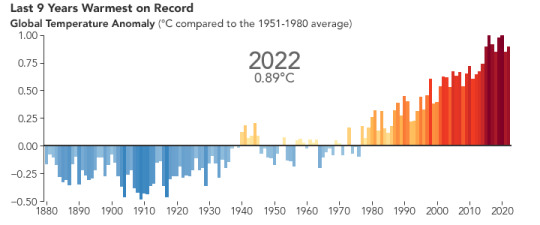
Ayon sa graph na ito ay nakikita talaga natin na mas mainit na ang mu do kumpara sa nakaraang siglo.
Dahil sa pag-init ng mundo, natutunaw na ang mga ice caps sa malalamig na parte ng mundo.
- Mga polar bear at iba pang hayop na nakatira sa mga malalamig na parte ng mundo ay nagiging endangered o naeextinct. Hindi lamang dahil sa pag-init ng kanilang kapaligiran, ngunit may mga hayop din na namamatay dahil wala nang matirahan dahil sa pagputol ng puno. Ang pagbawas ng tag-ulan sa mga lugar nila ay nagreresulta din sa pagpatay ng mga hayop dahil sa sobrang init, wala na silang mainom at hindi pa umuulan. Minsan naman walangulan, at minsan sobrang lakas ng ulan na nagdudulot sa hurricanes o typhoons at cyclones (depende kung saang lugar) na sinisira din ang mga tirahan ng mga hayop. Halimbawa ng mga hayop na naaapektuhan ng Global Warming ay ang:
- Koalas. Nasira ng Global Warming at climate change ang kanilang mga tirahan at nasa 100,000 hanggang 200,000 nalang ang natitira ngayon.

- Polar Bears. Ang pagtunaw ng ice caps ay pagwala ng kanilang tirahan. Hindi din nabubuhay ang mga hayop na ito sa mainit na lugar. Patuloy-tuloy ang pagbawas ng mga polar bear at sila ay nasa 22,000 hanggang 31,000 nalang ngayon.
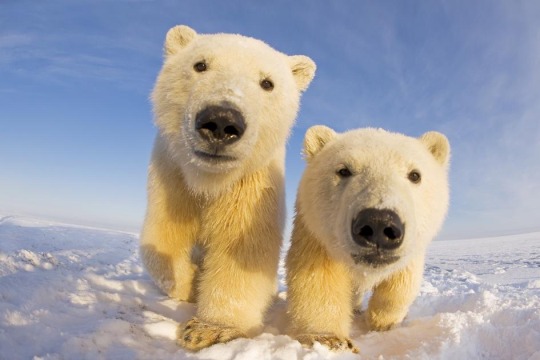
- Monk seal. Kahit na ang pinagmulan ng kanilang pagubos ay ang pagpatay sakanila, nadagdagan ito ng Global Warming dahil dumami ang mga algae na toxic para sakanila, tinatawag na red tide. Nasa 700 na lamang sila ngayon

- Caribou. Kung sa ibang lugar ay umiinit, may mga lugar din na lumalamig. Nakakaapekto ito sa mga hayop na ito dahil nakukulog ang mga pagkain nila sa yelo sa sobrang lamig.
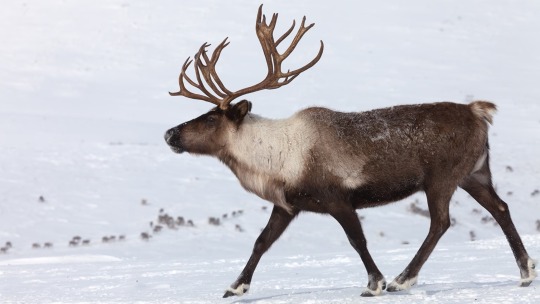
- Blue Whale. Ang pagtaas sa temperatura ng dagat ay nakakaapekto sa migration at mating ng mga hayop na ito.

Iilan lamang ‘yan sa mga naaapektuhan ng Global Warming. Sa mga tao naman, sinasabi ng mga aral na kapag nagpatuloy ang pagtaas sa temperature ng mundo, baka matunaw ang ice caps ng buo at malunod tayo. Nakikita na agad na tumataas ang sea level ng mundo. Noong 1900 hanggang 1990 ay tumaas ang sea level ng 4-5 inches. Sa 2015 naman, tumaas ng 3 inches. Ngayon, sinasabing tumataas daw ng 1/8 ng isang inch ang sea level bawat taon.
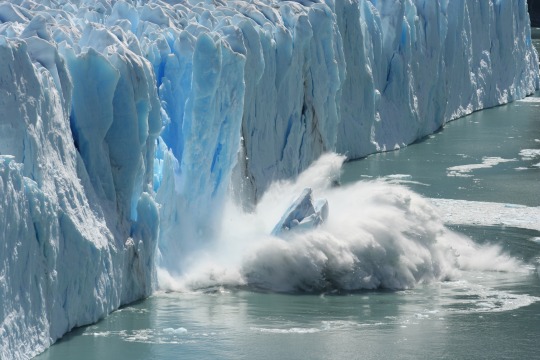
0 notes
Photo

Skelly Prime in the making.
#inprogress#sketch#skull#planet#stars#scifi art#space art#ringed planet#space#digital art#scifi#ice caps#art#artists on tumblr
8 notes
·
View notes
Text
Apocalypse Now & Then Revisited
Simply breathing, silence within
Life is a battle, only death can win
Rain falls gently as the icecaps melt
We need to take action, tighten our belt
Rising sea levels are cause for alarm
Mankind collectively doing such harm
Mass migration, a struggle to survive
Population explosion, few can thrive
My rose tinted glasses have slipped from my nose
All the better to distinguish my friends…
View On WordPress
#Apocalypse#Bipolar Disorder#Climate Anxiety#Climate Change#Climate Chaos#Climate Crisis#Death#Ice Caps#Meditation#Mental Fitness#Migration#Poetry#Population Explosion#Rhymes#Salvation
1 note
·
View note
Text
Big companies be like:
Fuck you!
*Un-freezes your ice caps*
0 notes
Text
Ice caps losing water and gravitational attraction
Ice caps losing water and gravitational attraction leading to more even distribtion of sea levels
I have written previously about sea level rises [see ‘Merseyside Totemy‘ on August 17th, 2022 and ‘Climate change and tides in Liverpool‘ on May 11th, 2016] and the fact that a 1 metre rise in sea level would displace 145 million people [see ‘New Year resolution‘ on December 31st, 2014]. Sea levels globally have risen 102.5 mm since 1993 primarily due to the water added as a result of the…

View On WordPress
0 notes